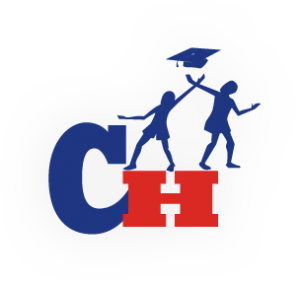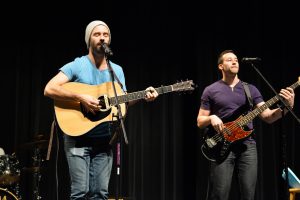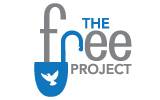The following blog post comes to us from Mary Toohey, president of the Gardner-Webb University’s Release Club, a chapter of the Free Project. Mary reflects on Release’s major Fall event: a concert featuring the Rory Tyer Band benefiting the organization Challenging Heights. She also provides insight into how to improve your university events and projects. For more on the GWU Release Club, visit their FP chapter page.
From birth, children in the United States are given greater access to success and comfort than their counterparts in third-world countries, who are riddled with economic hardship and cultural barriers to freedom. This third-world story begins in the hands of owners, not parents. As a child enslaved to the fishing industry, the first tasks are to pull fishing nets out of the water at 3 am, to avoid being attacked by fish as large as their tiny bodies, and to work a full day. Instead of education, they experience the beatings, malnutrition, and a dark life of pain and separation. These children are not identified as people in this world; they are investments.
In 1961 the Akosombo Dam in Ghana created Lake Volta. This man-made lake is one of the largest in the world, accounting for 3.6% of the total country and demonstrating the country’s dedication to overcoming economic oppression. It supplies a massive fishing industry. Simultaneously, the lake is also home to thousands of children, both girls and boys, whose life does not extend beyond the borders of the lake and the walls of the compound they sleep in. Enslaved as young as two, they enter from the surrounding rural regions and are forced to work at the lake. Families are lied to, believing the falsehood that their children will be taken care of and will have real jobs. Most children are taken directly off the street and are shuttled across the borders at night. Still others, the victims of poverty and lack of an education, are sold into slavery knowingly by their parents, who can no longer afford to take care of them.
The pivotal pillars propping up human trafficking (poverty, lack of education, greed, corruption) remain deeply embedded across the globe. Upward economic mobility is limited by subpar educational systems combined with poverty and familial expectations, which strips third-world children of protection from violence, police brutality, and slavery. The system is not designed with escape routes; each generation further perpetuates the brokenness of the slave family or the brutal mindset of the law enforcement.
 This is the system that Challenging Heights, a non-profit, enters into: they bring life and restoration into a corrupt and damaging structure. Per their tagline, they, “promote youth and family empowerment and children’s rights to education and freedom from forced labor in Ghana.”
This is the system that Challenging Heights, a non-profit, enters into: they bring life and restoration into a corrupt and damaging structure. Per their tagline, they, “promote youth and family empowerment and children’s rights to education and freedom from forced labor in Ghana.”  While opponents criticize many organizations for their efforts to “fix” the system with American ideals and models, Challenging Heights addresses the social issues from the perspective of the governmental policies already established in Ghana. Challenging Heights operates a school in Sankor, where they are able to serve over 700 children from high-risk trafficking areas and meet requirements for the country’s educational guidelines. In addition to educational aid, Challenging Heights works with local authorities and organizations to rescue children from the fishing industry, to rehabilitate and empower them after their rescue, and to prosecute the men who had enslaved them.
While opponents criticize many organizations for their efforts to “fix” the system with American ideals and models, Challenging Heights addresses the social issues from the perspective of the governmental policies already established in Ghana. Challenging Heights operates a school in Sankor, where they are able to serve over 700 children from high-risk trafficking areas and meet requirements for the country’s educational guidelines. In addition to educational aid, Challenging Heights works with local authorities and organizations to rescue children from the fishing industry, to rehabilitate and empower them after their rescue, and to prosecute the men who had enslaved them.
To accomplish this enormous and never-ending task, Challenging Heights needs the financial stability to maintain offices in Ghana and Washington, D.C . During the first two weeks of the 2015 summer, Gardner-Webb University’s human trafficking awareness club, Release the Captives, was approached by Challenging Heights to enter into a fundraising partnership. After months of planning and the assistance of a Historians Against Slavery Grant, we organized a benefit concert featuring the Rory Tyer Band in November 2015 to advocate for Challenging Heights. We encouraged the concert goers not only to enjoy the great musical act, but also to lend financial support to this worthy organization. This was a creative opportunity for students and community members to encounter real stories of slavery. While the event was a success, leaving a lasting impression on the audience, we
. During the first two weeks of the 2015 summer, Gardner-Webb University’s human trafficking awareness club, Release the Captives, was approached by Challenging Heights to enter into a fundraising partnership. After months of planning and the assistance of a Historians Against Slavery Grant, we organized a benefit concert featuring the Rory Tyer Band in November 2015 to advocate for Challenging Heights. We encouraged the concert goers not only to enjoy the great musical act, but also to lend financial support to this worthy organization. This was a creative opportunity for students and community members to encounter real stories of slavery. While the event was a success, leaving a lasting impression on the audience, we  learned several lessons worthy of mention to fellow justice-seeking university groups. Most importantly, remember that the audience is the central axis that any fundraiser or awareness event rotates around. We learned to understand the culture of the audience we are reaching, and this dictates marketing and logistics for the event, and implicates how successful the event can be. In considering the audience of a college campus, the timeline of student activities is crucial. Avoid busy times of the year like November, and promote as early as possible. Students need to be convinced that an event is worth their time, regardless the cause. Strive to build an event that capitalizes on the unique culture of your campus. By growing our organization through events like this, and by educating those ple around us, we can spread awareness of injustice and initiate change around the world.
learned several lessons worthy of mention to fellow justice-seeking university groups. Most importantly, remember that the audience is the central axis that any fundraiser or awareness event rotates around. We learned to understand the culture of the audience we are reaching, and this dictates marketing and logistics for the event, and implicates how successful the event can be. In considering the audience of a college campus, the timeline of student activities is crucial. Avoid busy times of the year like November, and promote as early as possible. Students need to be convinced that an event is worth their time, regardless the cause. Strive to build an event that capitalizes on the unique culture of your campus. By growing our organization through events like this, and by educating those ple around us, we can spread awareness of injustice and initiate change around the world.
For more on Challenging Heights, visit http://challengingheights.org/.
